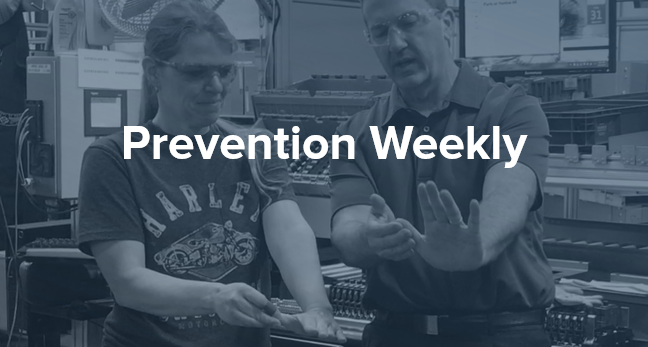Prevention Weekly delivers the best ergonomics, workplace athlete health, and safety leadership news right to your inbox every week.
Featured Article
Ergonomics Case Study — Rolling Pallet Improvement
Our monthly feature, Workplace Ergonomics Case Studies, moves away from abstract theory and dives into the real world practice of ergonomics. It’s about real people doing real work in ergonomics, with tangible takeaways and principles you can apply in your workplace right now.
Ergonomics Case Study — Rolling Pallet Improvement
Ergonomics
A Step-by-Step Guide to Using the NIOSH Lifting Equation for Single Tasks
Learn how to use the NIOSH Lifting Equation to evaluate the lifting and lowering tasks in your workplace.
A Step-by-Step Guide to Using the NIOSH Lifting Equation for Single Tasks
Truth vs. Myth: Do Wrist Rests Prevent Carpal Tunnel Syndrome?
Are you wondering whether wrists rests reduce fatigue and discomfort and prevent carpal tunnel syndrome? Let’s explore that together in this installment of Truth vs. Myth.
Truth vs. Myth: Do Wrist Rests Prevent Carpal Tunnel Syndrome?
Workplace Athlete Health
Using Wellness Programs to Reduce Injury Risk
“Spencley said workers reported feeling significantly less sore at the end of the workday after the program launched. “People like working hard, and they do not want to go home sore,” he said. ‘The way they can do that is they prepare themselves for the work they are going to do.'”
Using wellness programs to reduce injury risk
Frequently Asked Questions About Early Intervention
Perhaps you’ve heard that early intervention has proven to be successful for many other companies. Naturally, you have some questions about how it might work for you. Sound familiar? Here are the most frequently asked questions we get from prospective clients, answered.
Frequently Asked Questions About Early Intervention
Safety Leadership
Microlearning: A New Approach to Safety Training
An important component of the fourth industrial revolution referred to as Industry 4.0 will be the adoption of new training techniques. Leading these new techniques is a process called microlearning. The gist of this approach is to shorten, focus and increase the availability of training. Rather than having workers attend a 15-30-minute (or longer) workshop or computer-based training (CBT) module, they can access a four-minute or less module on their phone or other smart device covering one important aspect of the training. A series of these modules can replace, or be used to reinforce, the longer classroom or CBT modules. In addition to being brief and readily available, they can be re-accessed as needed to refresh the worker on the issue.
Microlearning: A New Approach to Safety Training
Ergonomics Plus solutions help proactive safety teams prevent musculoskeletal injuries and advance employee well-being.
